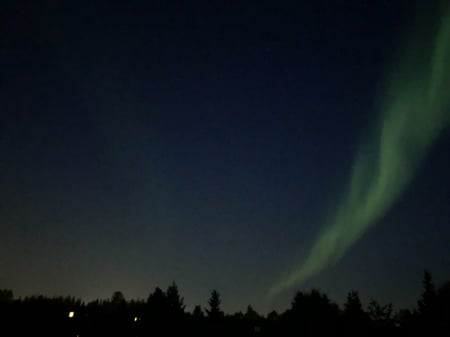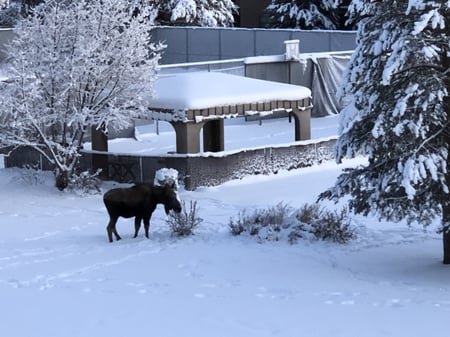Staying at University of Alaska Fairbanks/International Arctic Research Center (UAF/IARC) about a half year, I’ve investigated spatiotemporal variations in sea-ice lead distribution using satellite remote sensing techniques. You can find a short report (written in Japanese) from here.
Fairbanks, the second largest city in Alaska, is a tourist city surrounded by nature and arguably the most popular destination for visitors who want to see the northern lights. Nothing says “northern lights” like winter thing, but northern lights are not just winter things; indeed, when I looked up the sky from the window, I found weak northern lights just after my arrival in late August. I was not particularly impressed by northern lights because I’ve come across them many times during field works in the Arctic Ocean, but I realized that I came to Alaska at that moment.
Encountering wildlife in the city is a daily occurrence. Adult moose with children comes to the courtyard of the dormitory almost every day in winter. I wanted to see an adult male moose with a big horn, but finally I couldn't see it. I heard later that moose’s horn breaks off in winter and grow again in spring. I saw a huge moose without a horn in winter, so maybe it was an adult male.
As I stayed in Fairbanks for a half year, I was able to join a variety of events, including events familiar in Japan and also events unique to the United States. I had precious experiences regarding not only research perspective but also daily life in Fairbanks. All of such experience would be valuable for me. Thank you very much for giving me this great opportunity.
Hisatomo Waga (Hokkaido University)






